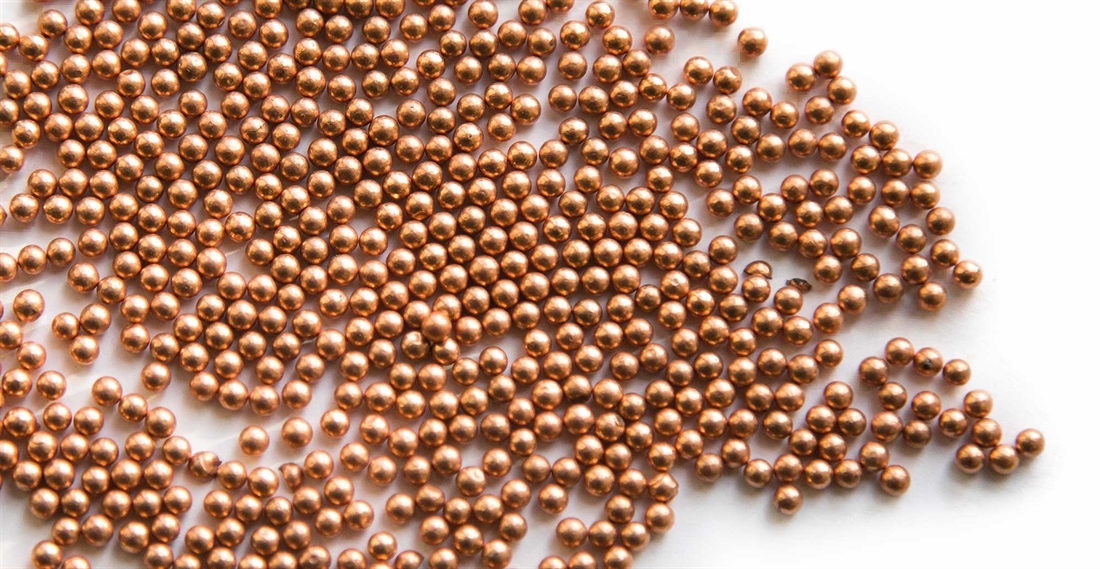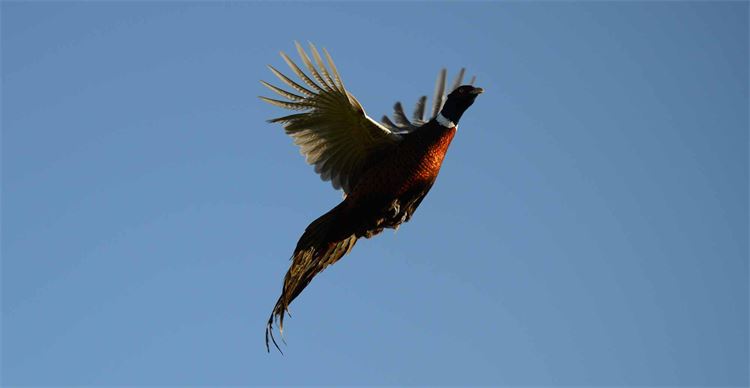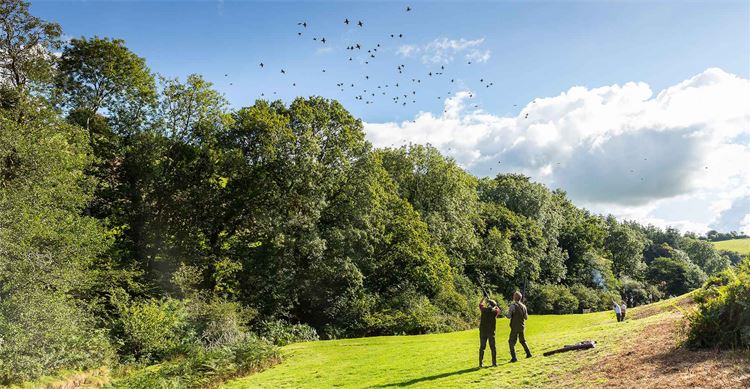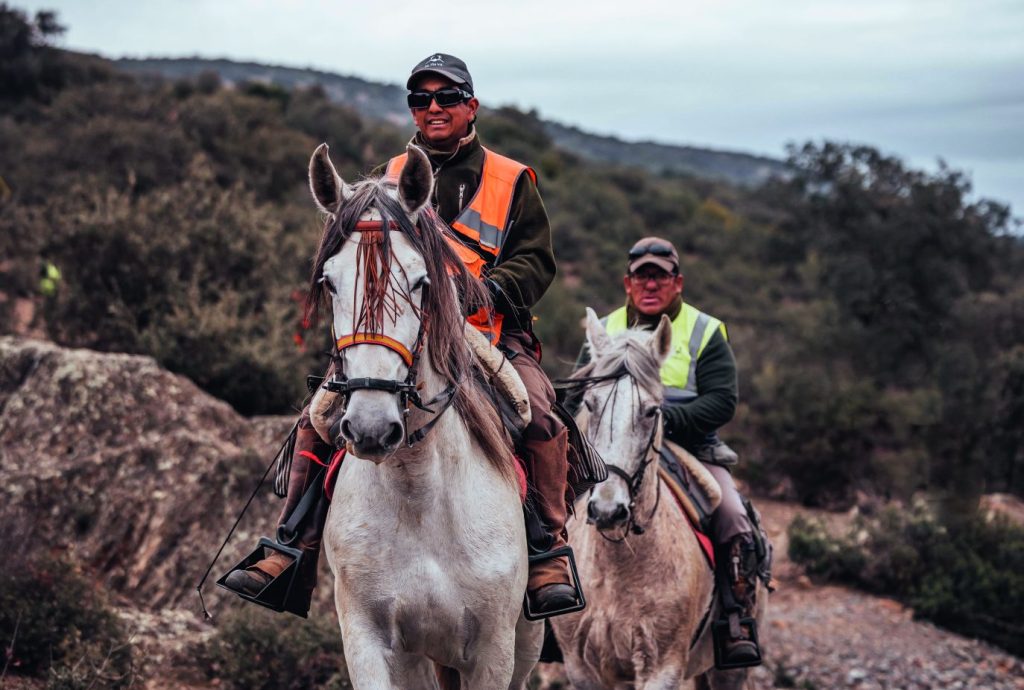Copper-coated shot demystified
Is the recent surge in the popularity of copper-coated lead shot a result of clever marketing, or are these cartridges as good as some claim? Matt Kidd asks the opinion of various manufacturers and respected game Shots.

Whether shooting pigeons, grouse, pheasants or partridges, game Shots often have a preferred cartridge brand and load – some are even die-hard loyalists who will buy them in huge quantities. As with many other pieces of kit and fieldsports paraphernalia, fads and fashions come and go. But is the latest trend of using copper-coated lead shot here to stay?
The technology has been around for many years now; the first examples of coated shot (with copper, nickel and even gold) date back to the 1950s. So why are copper-coated shot cartridges now in vogue? Are more people falling for clever marketing, or are these cartridges as good as claims suggest?
I started browsing online forums for people’s views, and opinion seems to be split. It will come as no surprise that I found two distinct camps: those who are big fans of ‘copper cartridges’, and those who remain sceptical. The latter share a good point: “a shot in the right place will bring down any bird, regardless of the cartridge”, whilst the aficionados claim they are the hardest-hitting cartridge they have tried, and their shot to kill ratio has increased noticeably since they starting using them.
Indeed, neither delivered sound proof, so I have delved a little deeper into the ideas and science behind ‘copper shot’.
To broaden my research, I contacted a number of cartridge manufacturers. I first spoke to David Thompson, marketing manager at Eley Hawk.
Eley have worked with copper-coated shot since 1992. Their first cartridge to incorporate this technology was the Classic Game paper case – designed for use in traditional side-by-sides – and their latest is the Eley Zenith, a range released in 2015 to suit modern over-unders.
Why copper?
“Our engineers realised that the key to creating consistent shot patterns at range lies in ensuring that individual pellets can fly as straight as possible,” says David. “To achieve this they tried various things, but the one test which proved most efficient whilst remaining affordable was applying a thin coat of copper to the lead shot.”
As the element is much harder and smoother than lead, a coating of copper around the softer lead shot is said to reduce the friction between the shot and the barrel walls, therefore minimising premature deformation, yet remaining malleable enough at a typical range to transfer sufficient energy into a bird’s tissue and organs to kill it humanely.
How?
For physicists and chemists, adding copper plating is a relatively simple process, and takes place once all normal stages of creating lead shot have been completed. The lead shot is bathed in a special ionic solution – in layman’s terms, a bath of dissolved copper in water and chemicals – which is then exposed to a direct electronic current. With voltage applied, the copper particles act as an anode (positive terminal) and the lead a cathode (negative terminal), thus the copper is attracted to the lead and sticks firmly and, hopefully, seamlessly to it.
The length of exposure and strength of electricity in this process is crucial. “It is all about creating the perfect balance,” says David. “For example, too much time in the solution will overcoat the lead and make it overly large and heavy. And too high a voltage will cause hydrogen bubbles in the solution and lead to imperfections in the lead and overall finish.”
In some parts of the world, manufacturers use an alternative method of application. Highly respected shooting instructor and gunmaker Chris Batha explains: “The second and cheaper process of coating lead with copper is by washing lead in a copper solution. This will not provide a consistent finish and the result is a thinner coating than you’d get with electrolysis plating.
“In some instances, copper-washing lead pellets can be no more than a cosmetic process, and you should look for quality cartridges coated using the electrolysis process if you are serious about seeing the benefits of using coated shot.”
Other factors
Having ‘improved’ the quality and characteristics of the shot, it would also make sense that the other components that make up a cartridge should be developed, too.
Manufacturers tend to have their own ‘bespoke’ powders. Hull Cartridge Company’s Robert Everitt helped develop their Driven Grouse (copper-coated lead) cartridge with shooting instructor Adam Calvert. “A quality powder helps to prevent the shot from balling at the initial phases and allows it to travel smoothly through the gun and chokes, thus maintaining a good pattern,” he says. “And fibre wads have also been developed in order to prevent the harder shot from embedding in the wad.”
Performance in the field
Exactly how copper-coated lead shot performs in the game shooting field is an area of debate. Some claim that the cartridges are suitable for all gamebirds and state they are superior to standard alternatives. Robert Everitt, however, claims copper-coated shot is excellent for grouse and partridges, but recommends traditional lead for pheasant shooting. “Each quarry species is different and requires a specific type of cartridge,” he says. “If you are shooting straight at a bird, grouse being a prime example, harder shot improves penetration, and therefore ensures the shot reaches vital organs and kills the bird. This is especially important for going away birds or birds flying at angles where there is a lot of bone and tissue to get through.
“High pheasants on the other hand, are a different story, for which standard lead is still my preferred option. We have invested heavily in in-field testing and our results tell us that standard lead deformation values can’t be beaten – particularly with larger shot sizes as copper coating values are negated.
On the contrary, David Scott from Gamebore feels that harder shot – coated or otherwise – is well-suited to high pheasants. “This is because when the shot starts to slow down at range, a harder shot will penetrate the feathers, skin and tissue more easily,” he says.
To bear in mind
Copper-coated shot cartridges are currently approximately 6 per cent more expensive than premium lead shot cartridges, which adds up if you are buying in bulk. So do they represent good value for money? “We have tested our copper-coated cartridges against our premium lead loads on pattern plates out to 15–20 yards – using the same gun, chokes and barrels – and have found that the former have approximately 40 per cent more pellets within a 30″ circle,” says David Thompson. “The general industry-wide consensus is that within the circle there should be no less than 120 pellets; with the copper-coated product the average is 172.”
Other alternatives
David Scott from Gamebore claims to have experimented with the copper coating of lead shot and Gamebore have chosen not to incorporate it into their new products. “The quality of the lead shot is paramount – what you coat it with is irrelevant if it’s not perfectly round,” he says.
“We believe that Gamebore have developed a new technology to coat shot that is more consistent and offers even better characteristics than copper-coated shot. We feel that electro-plating is not the most accurate way to produce slippy, hard shot and we have seen examples where lead is only half coated.”
Nick Levett-Scrivener (UK wholesaler for RC Cartridges), meanwhile, has been selling nickel-plated lead shot cartridges in the UK for many years. “These were very popular for trap shooting and were used in conjunction with our full lead cartridges,” he explains. “Choked correctly, the nickel cartridge would be placed in the first barrel as the pattern opened more evenly and faster than that of a standard lead cartridge. As the first target was closer, a more open pattern was desirable. The second barrel would then be loaded with a full lead cartridge – offering
a tighter pattern for a second target which would now be much further away.
“Nickel is more expensive than copper, and its properties are superior to it. I have found that the patterning is so evenly spread. This year, I have developed the technology into a proper game cartridge to see how this fares in the field,” states Nick.
So what do game Shots think?
“Both nickel- and copper-coated loads require the lead core of the pellet to have a 5 per cent value antimony or more in conjunction with the copper coating to be more effective,” says Chris Batha. “The Sporting Arms and Ammunition Manufacturers Institute (SAAMI) tells us that lead shot pellet hardness is established by the amount of antimony alloyed with the lead. The higher the antimony content in a lead pellet, the harder the pellet – enabling it to better resist deformation during the various stages of the shot (firing, set back, forcing cone, barrel scrub and the choke restriction).
“What this offers game Shots for the extra money is still up for debate,” says Chris. “Soft pellets incur more damage than harder pellets, so, theoretically, standard shot will result in more flyers and poorer patterns – especially at long range.”
Mark Crudgington of George Gibbs Ltd, also shares his thoughts. “Today, most trap shooters do not believe that copper-coated cartridges make a big difference and opt for top-quality full lead cartridges instead – and they are typically very quick to pick up on trends if they give them any sort of advantage in competition.
“To me, if trap shooters have not taken to them, then they can’t be the most superior cartridge – but I may be wrong.”
At the end of the day, regardless of the technology, no cartridge will make you a better Shot. Shoot what you are confident with and know that if you put it in the right place, the bird will be killed quickly and efficiently. And if you are still curious, why not experiment a little at the pattern plate with a few different cartridges, and investigate the matter yourself?
Related Articles
Get the latest news delivered direct to your door
Subscribe to Fieldsports Journal
Elevate your experience in the field with a subscription to Fieldsports Journal, the premium publication for passionate country sports enthusiasts. This bi-monthly journal delivers unparalleled coverage of game shooting, fishing and big game across the UK and beyond.
Each issue offers a stunning collection of in-depth features, expert opinions and world-class photography, all presented in a timeless yet contemporary design.
Save 10% on shop price when you subscribe, with a choice of packages that work for you. Choose from Print & Digital or Digital only with each journal delivered directly to your door or via the app every other month, plus access to past issues with the digital back issue library.









